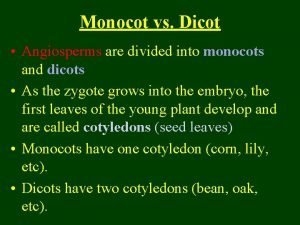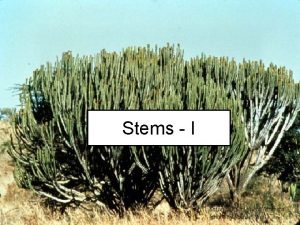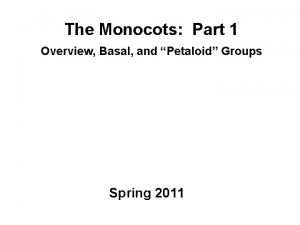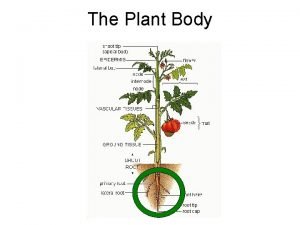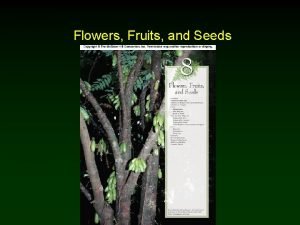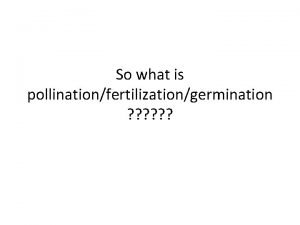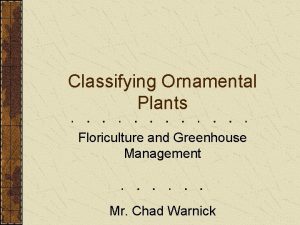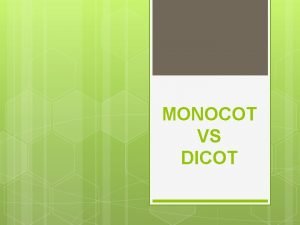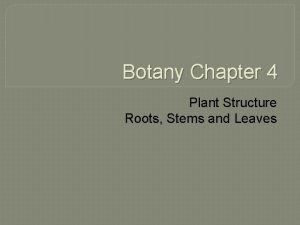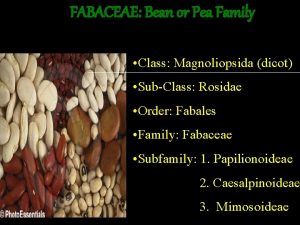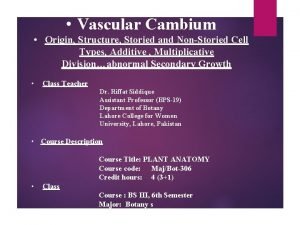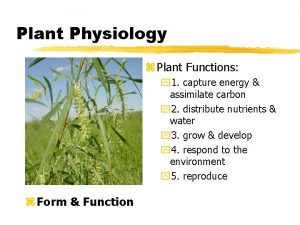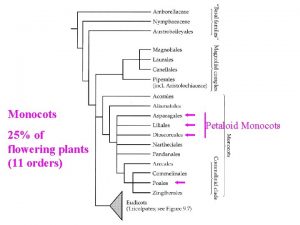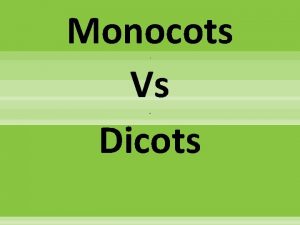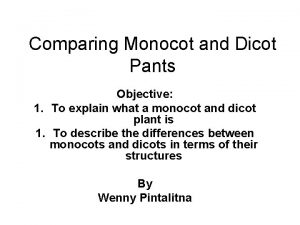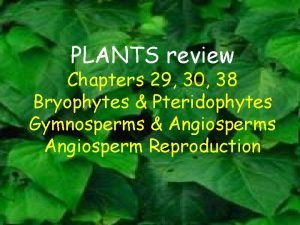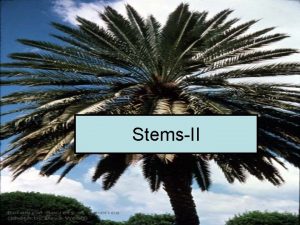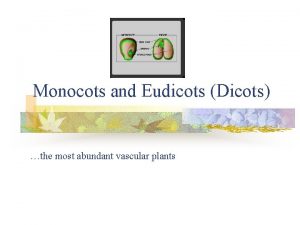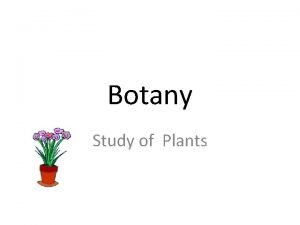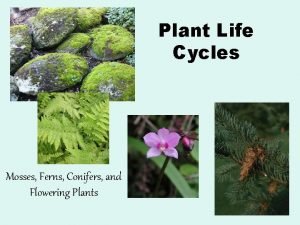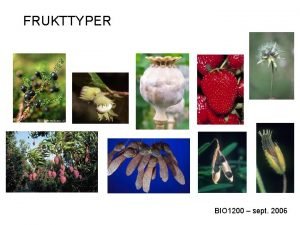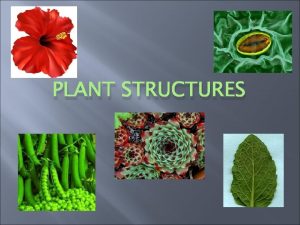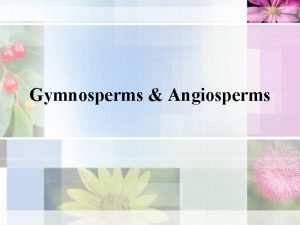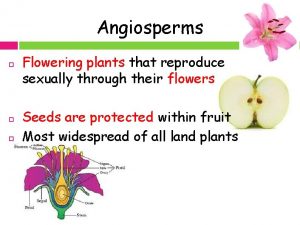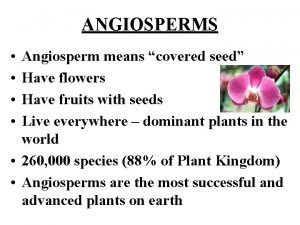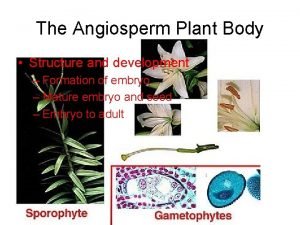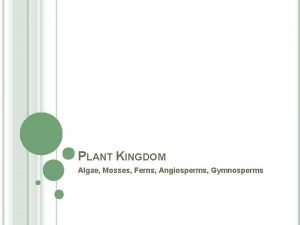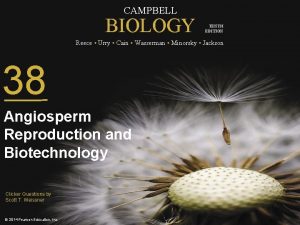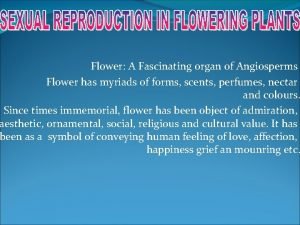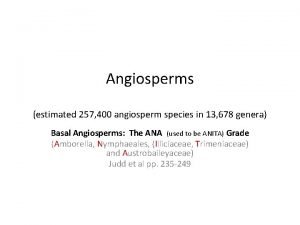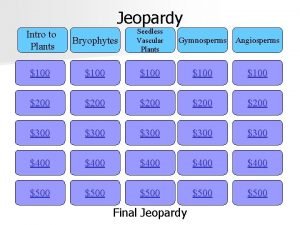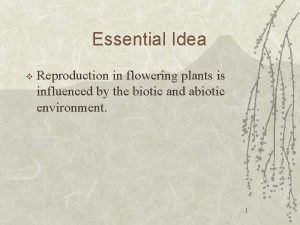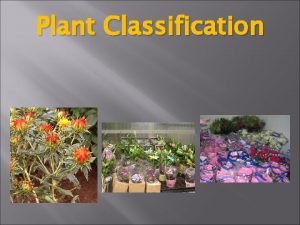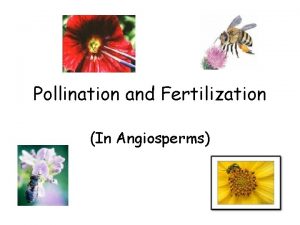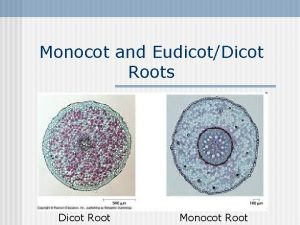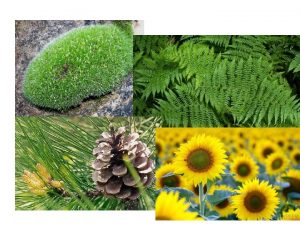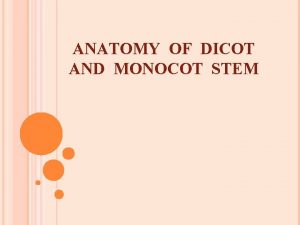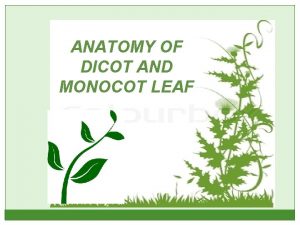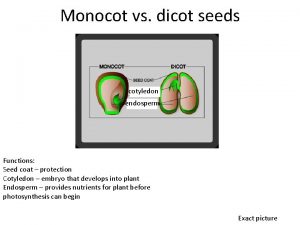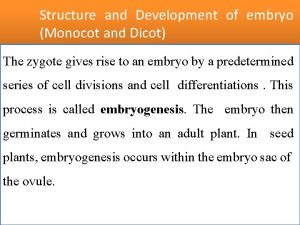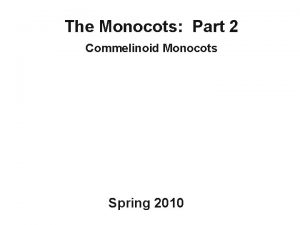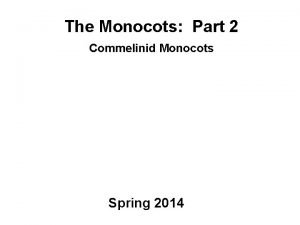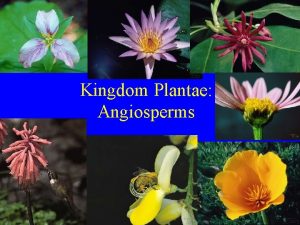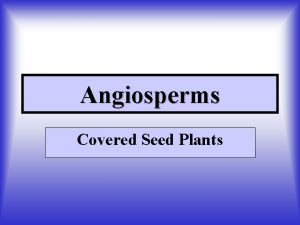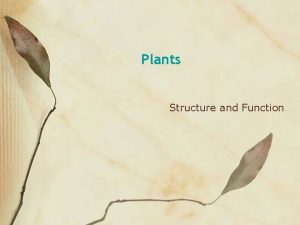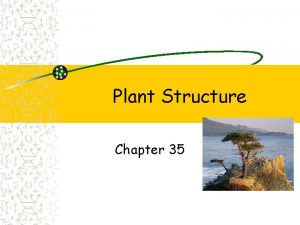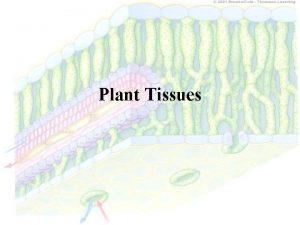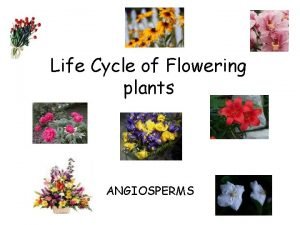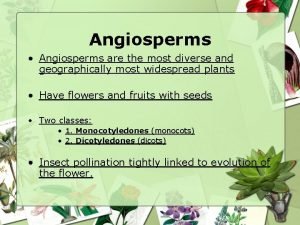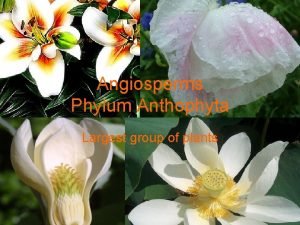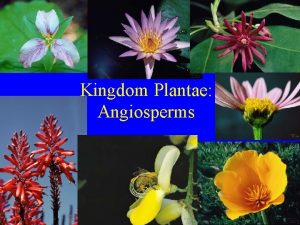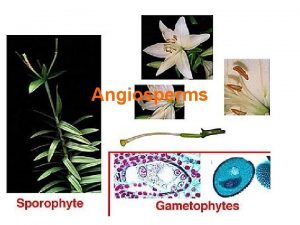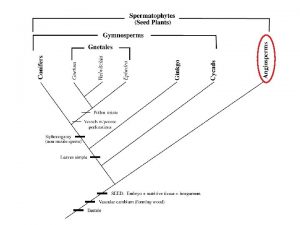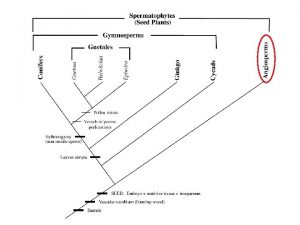Monocot vs Dicot Angiosperms are divided into monocots








































- Slides: 40

Monocot vs. Dicot • Angiosperms are divided into monocots and dicots • As the zygote grows into the embryo, the first leaves of the young plant develop and are called cotyledons (seed leaves) • Monocots have one cotyledon (corn, lily, etc). • Dicots have two cotyledons (bean, oak, etc).




FEATURE MONOCOTS DICOTS Cotyledons 1 2 Leaf venation parallel broad Root system Fibrous Tap Number of floral parts In 3’s In 4’s or 5’s Vascular bundle position Scattered Arranged in a circle Herbaceous Either Woody or herbaceous

Life cycles From Outlaw’s lecture series

Floral structure Angiosperm life cycle Gametophytes Today From Outlaw’s lecture series

Monocot seed development typical monocot (maize) seed with ovary wall (pericarp) Monocots have one cotyledon (scutellum in grasses) that matures during germination Source of nutrition for seed germination: endosperm (compare to dicot) Maize fruit and seed

Dicot seed development immature dicot - two cotyledons mature Three tissue systems: Dermal Vascular Cortex or Ground All cells of the primary growth in dicots are part of these three systems and originate at meristems. . . A reminder that endosperm is formed in all angiosperms, but does not persist in dicots. In dicots, cotyledons are the primary source of nutrients for germination.


Seed germination What causes a seed to resume growth? What is growth? Broadly, where do the energy and basic elements required for growth come from? What observations did you make while germinating seeds? Plants-In-Motion Time-lapse videos of plant growth and response


Dicot germination and seedling An example of epigeous (epi=above, geo=earth) germination

Dicot germination and seedling An example of hypogeous (hypo=below, geo=earth) germination

Monocot germination and seedling

Root the first structure to emerge from the germinating seed Typical dicot Taproot persists and grows deep into the ground Typical monocot Taproot does not persist and adventitious roots originate from the shoot Notice the high surface volume: area ratio

Roots - Comparisons Taproots: Fibrous roots: Typical of dicots, primary root forms and small branch roots grow from it In monocots mostly, primary root dies, replaced by new roots from stem

Tap Root vs. Fibrous Root What are the functions of roots? From Outlaw lecture Typical of a dicot Typical of a monocot

Organization of the plant body Meristem = group of perpetually “embryonic” cells Apical = at the tip (of the root, the shoot, including laterals)

Diagram of major parts of primary dicot plant body Vascular tissue is throughout the plant body

Ground tissue of typical dicot root and shoot Root Buttercup (Ranunculus) Shoot Alfalfa (Medicago)

Vascular tissue of typical dicot root Root Buttercup (Ranunculus)

Dicot Root

Monocot Roots

Secondary Growth (root) Example cross section of the dicot root in primary growth The cambium (perpetually meristematic layer between xylem and phloem) divides mitotically, producing either: A secondary xylem cell to the inside and a replacement cambial cell. OR A secondary phloem cell to the outside and a Secondary growth rare in monocots replacement cambial cell. From Outlaw’s lecture


Roots – Structure and Development Epidermis Cortex Monocot Endodermis Location of Casparian strip Primary phloem Pericycle Primary xylem Pith 1250 µm 385 µm Endodermis Location of Casparian strip Endodermis Eudicot Primary xylem Cortex Primary phloem Epidermis Pericycle 48 µm

Vascular tissue of typical dicot shoot Shoot Alfalfa (Medicago)

Herbaceous dicot stem

Monocot stem

Primary tissues differently organized in angiosperm shoots Typical of dicots Typical of monocots

Primary tissues differently organized in angiosperm shoots Example dicot stem cross section vascular bundles in ring with defined pith and cortex Shoot Alfalfa (Medicago)

Primary tissues differently organized in angiosperm shoots Example monocot stem cross section vascular bundles scattered Maize (Zea)

Secondary Growth (shoot) Example cross section of the dicot shoot in primary growth The cambium (perpetually meristematic layer between xylem and phloem) divides mitotically, producing either: A secondary xylem cell to the inside and a replacement cambial cell. OR A secondary phloem cell to the outside and a replacement cambial cell. From Outlaw’s lecture






 Angiosperm monocot vs dicot
Angiosperm monocot vs dicot Monocot or dicot
Monocot or dicot Colocasia is monocot or dicot
Colocasia is monocot or dicot Root anatomy
Root anatomy Dicot fruits
Dicot fruits Is coconut a monocot or dicot
Is coconut a monocot or dicot Difference between dicot and monocot
Difference between dicot and monocot Water lily monocot or dicot
Water lily monocot or dicot Part of flower that produces pollen
Part of flower that produces pollen Dicot leaf
Dicot leaf Types of roots
Types of roots Magnoliopsida order
Magnoliopsida order Cambium functions
Cambium functions Antigentest åre
Antigentest åre Z plant
Z plant Monocot orders
Monocot orders Monocots vs dicots
Monocots vs dicots Kolateral terbuka
Kolateral terbuka Identify the stamen
Identify the stamen Monocot vs eudicot
Monocot vs eudicot Meristem
Meristem M youtube.com
M youtube.com Monocots and eudicots
Monocots and eudicots Contrast gymnosperms and angiosperms
Contrast gymnosperms and angiosperms Life cycle of gymnosperms
Life cycle of gymnosperms Bio 1200
Bio 1200 Dicot seed germination diagram
Dicot seed germination diagram Gymnosperms and angiosperms
Gymnosperms and angiosperms Angiosperms
Angiosperms Covered seed
Covered seed Partes de la semilla
Partes de la semilla Mosses ferns conifers and flowering plants
Mosses ferns conifers and flowering plants Double fertilization in angiosperms
Double fertilization in angiosperms Flower a fascinating organ of angiosperm
Flower a fascinating organ of angiosperm Nymphaeles
Nymphaeles Tomato asexual reproduction
Tomato asexual reproduction Polyembryony
Polyembryony Angiosperms _____.
Angiosperms _____. Angiosperms double fertilization
Angiosperms double fertilization Plants are classified as
Plants are classified as Double fertilization in angiosperms
Double fertilization in angiosperms
